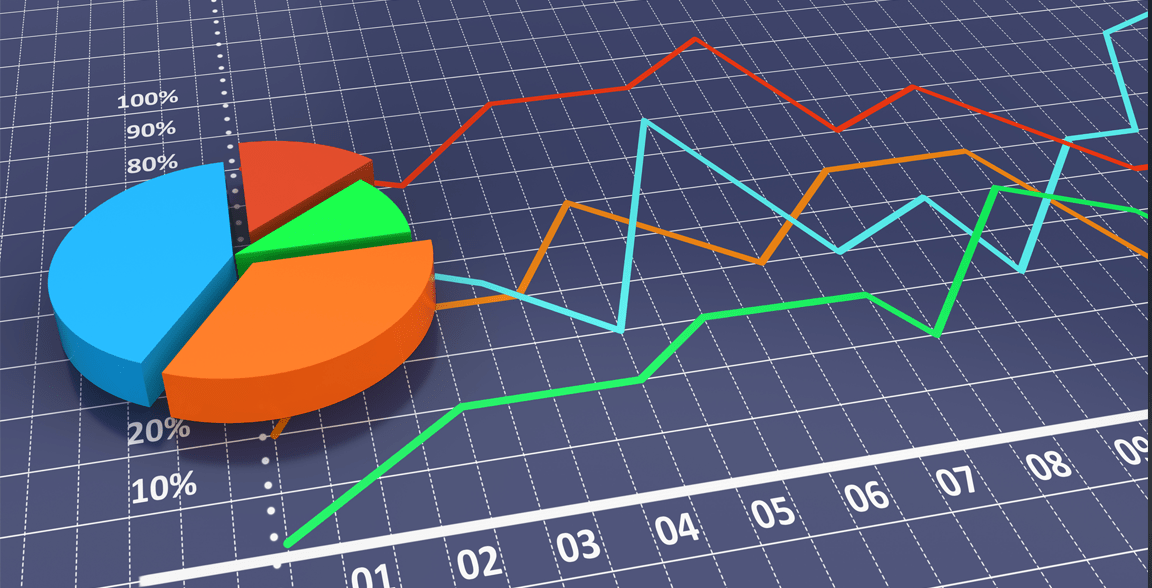Preferred securities: The overlooked fixed income alternative

Summary
Preferred securities, or preferreds, play a unique role in investment portfolios while occupying a special place in corporate capital structures. These hybrids feature characteristics of both stocks and bonds, making them an attractive complement to “pure” equity and debt securities. Now may be a good time to consider this often-overlooked asset class and explore whether an allocation might be appropriate in the context of an investor’s risk and return objectives.
Key takeaways
|
Preferred securities are a relative niche investment class, but their growing popularity ($1 trillion in issuance vs. $1.3 trillion in high yield1) reflects their appeal to investors seeking a level of potential risk and reward between equity and debt securities while providing issuers with an additional source of capital.
Like stocks preferred securities issued to retail investors trade on major exchanges. They have the potential to rise or fall in value but generally exhibit less volatility than the issuer’s common shares. And preferred shareholders have a prior claim over common stockholders to the corporation’s assets in the event of a liquidation.
Like bonds preferreds provide investors with current income through recurring payments, which may be fixed or floating. Preferred shareholders stand in line ahead of common shareholders for dividend payouts, whose yield is generally higher than the dividend yield on the issuer's common stock.
In this white paper, we describe preferred securities and present a comparison of preferred to other income-producing securities on the basis of yield and quality, their correlations to other major asset classes, the characteristics that make them exhibit less interest rate risk. We also provide an overview of the issuer landscape by industry group and investor segment. Finally, we define key attributes that may render one preferred issue more suitable for an investment portfolio than another.

What are preferred securities?
Preferreds, sometimes referred to as hybrids, are income-producing securities with bond and equity characteristics that aim to provide investors with high income and good relative value. While companies are able to mix various debt and equity features to create securities that suit their needs, common features are often: long dated or perpetual maturities with call dates after 5 or 10 years, subordinated in the capital structure, and able to defer payments without triggering an event of default. The wide variety of security structures available in the market enables investors to diversify their fixed income portfolio and potentially manage interest rate risk.

Who issues them and why?
- Preferred securities represent an important source of non-common equity capital for regulated entities
- Post-Global Financial Crisis regulations have sought to reduce systematic risk by increasing loss absorbing capacity at banks. While the first line of defense is higher common equity requirements, regulators also require a layer of perpetual noncumulative capital, known as Additional Tier 1 Capital or AT 1
- Banks comprise a substantial portion of the market (57%) due to these regulations

Features of Preferred Securities
- Attractive Yields: Preferred securities have historically had higher yields when compared to other traditional fixed income asset classes.
- High Quality Income: Typically investment grade rated, preferred securities generate a high level of steady income, and the combination of market appreciation and income can generate yields above 5%.
- Lower Interest Rate Sensitivity: Designed to have less interest rate sensitivity than most other fixed income options, preferred securities available in floating rate and fixed-to-floating rate instruments. Abundant fixed-to-floating rate preferred structures are available to help investors manage interest-rate risk.
- Increased Diversification: Limited correlation with other asset classes increases portfolio diversification benefits. The variety of security structures within the preferred market allow for investors to customize their holdings to create a portfolio with the risk/reward features that suit their diversification requirements.
- Large & Liquid Asset Class: Preferred securities comprise a $1 trillion market. Like US fixed-income markets in general, they exhibit significant and repeatable valuation inefficiencies which can be exploited to the benefit of investors through a dedicated bottom-up security selection process.

A brief history
Preferred securities were first introduced in the 19th century to help finance the completion of the railroads and canals. New investors in those projects demanded a priority dividend payment over the existing common shareholders given the significant additional capital financing required to complete the projects and the improbable distribution of common dividends over the near term. The term “preferred” refers to the holders’ payment priority over common stock. Investors ceded their voting rights and the potential for future capital appreciation normally associated with equity in exchange for a preferred income stream and a priority claim on assets relative to existing shareholders in the event of a company’s liquidation.
All payments to preferred holders must be made before any payments to common equity holders. However, payments to the preferred class may be deferred or omitted – although this is rare and occurs only if a company is in financial distress. Like equities, preferreds have very long, often perpetual, terms. Deep subordination, the ability to defer or forego payments and long duration are features that generally drive security credit ratings 3 to 5 notches lower than the issuer’s senior debt.

Collectively, the market for preferred securities is roughly $1 trillion, a four-fold increase since 2005. The preferred securities market is roughly equal to the size of the high yield market ($1.3 trillion), both of which are a fraction of the size of the US equity market (more than $30 trillion).2

In the US, the preferred market became synonymous with the $25 exchange-listed market, which is dominated by retail investors given the small par size. However, the $25 market is only part of the market available to issuers. A $1000 over-the-counter market also exists, where institutions trade large lots, similar to the bond market.
Frequently overlooked
Despite market growth, an allocation to preferred securities is often missing from investors’ portfolios. The hybrid nature of a preferred may make it difficult to fit this investment class neatly in either the debt or equity universe.
For investors, preferred securities have acted more like bonds. Preferreds have a fixed par amount, make scheduled payments at either a fixed or floating rate, and often carry a rating from a credit rating agency.
Collectively, the market for preferred securities is roughly $1 trillion, a four-fold increase since 2005.
But investors must also be paid for their equity-like features, deep subordination and long duration, with higher yields than they would receive on normal corporate bonds. On a historical basis, in normal inflationary periods income for preferred shareholders has been most commonly in the 6-8% range, generally higher than both the dividend offered on the issuer’s common shares and the coupon payment on its bonds. The yield advantage to senior debt for the same issuer can be competitive with the issuer’s high yield bonds, often making the preferred class the highest yielding security for a company – and one of the highest yields within the fixed income markets.
Preferreds in issuer capital structure
Preferreds are a form of equity for issuers. These securities offer an ability to meet capitalization targets, particularly requirements established by regulators or ratings agencies, without diluting existing shareholders control and claim on future earnings.
Aside from paying interest rather than dividends, these securities retain other features of the preferred share class, such as deferrable coupons and long maturities.
Regulated entities, such as banks (57.2%), insurance companies (13.1%) and utilities (12.7%), represent 83% of the market. This reflects the regulatory requirement for junior capital securities. Unregulated corporates often issue interest-bearing preferred equity as they are attempting to make the issue more appealing in the eyes of ratings agency capital requirements rather than regulators, aside from paying interest rather than dividends. These securities retain other features of the preferred share class such as deferrable coupons and long maturities.


Market segmentation
A company can issue securities into either the retail or institutional market. It generally utilizes both to diversify its investor base and tap into the various sources of capital and liquidity available to it. Retail investors are often looking at absolute coupon or yield to call, and institutional investors are usually looking at preferred securities’ comparable spread over senior bonds from the same issuer or over Treasuries.
While each market segment has security structures tailored to its primary investor bases, a few securities exist that offer nearly identical credit and structural risk. Differences in technicals and value assessment driven by supply and demand in the two markets can cause substantial differences in the value of similar securities over time. Pricing discrepancies can provide active managers with the ability to move between the markets in an effort to capture value while selecting securities that seek to offer the best risk/ return profile for an investment portfolio. Exhibit 7 shows how two similar preferred securities issued in different segments of the market can diverge in price over time.

Conclusion
Preferred securities shouldn’t be overlooked when evaluating opportunities. Although additive to fixed income allocations, the asset class shares characteristics with equities. Deciding where preferreds fit into a portfolio is a function of an issue’s structure, with plenty of features and associated benefits to meet an individual’s needs.
1 Source: Allianz Global Investors, Bloomberg, based on ICE BofAML Fixed Rate Preferred Securities Index and Bloomberg Barclays US Corporate High Yield Index. Data as of 31 December 2019.
2 Allianz Global Investors, Bloomberg, based on ICE BofAML Fixed Rate Preferred Securities Index, Bloomberg Barclays US Corporate High Yield Index and S&P Dow Jones. Data as of 31 December 2019.
Five ways the coronavirus could change how we think about sustainability

Summary
The coronavirus pandemic has highlighted core sustainability issues such as income inequality, poor healthcare and complex supply chains. As a result, sustainability is likely to become increasingly integral to asset managers’ investment processes and risk analysis. Here are five ways we think the crisis will affect investors.
Key takeaways
|






